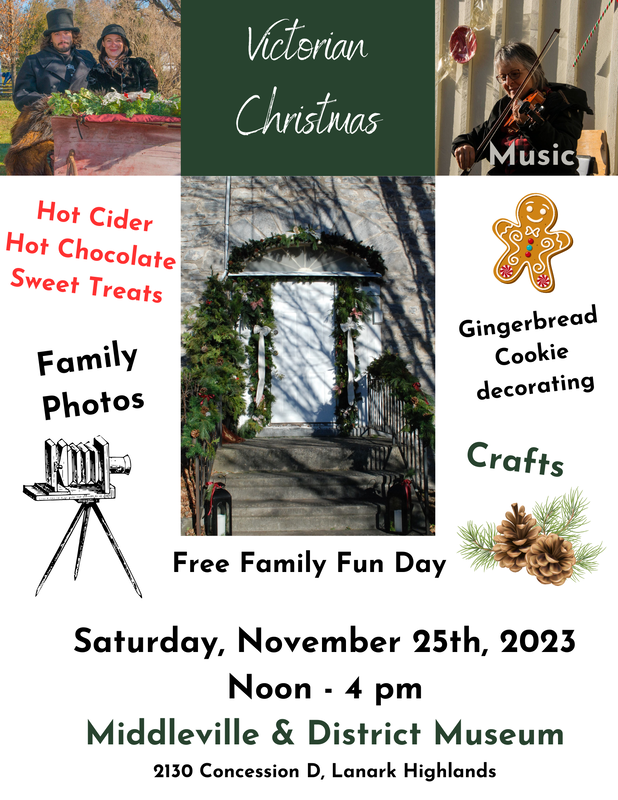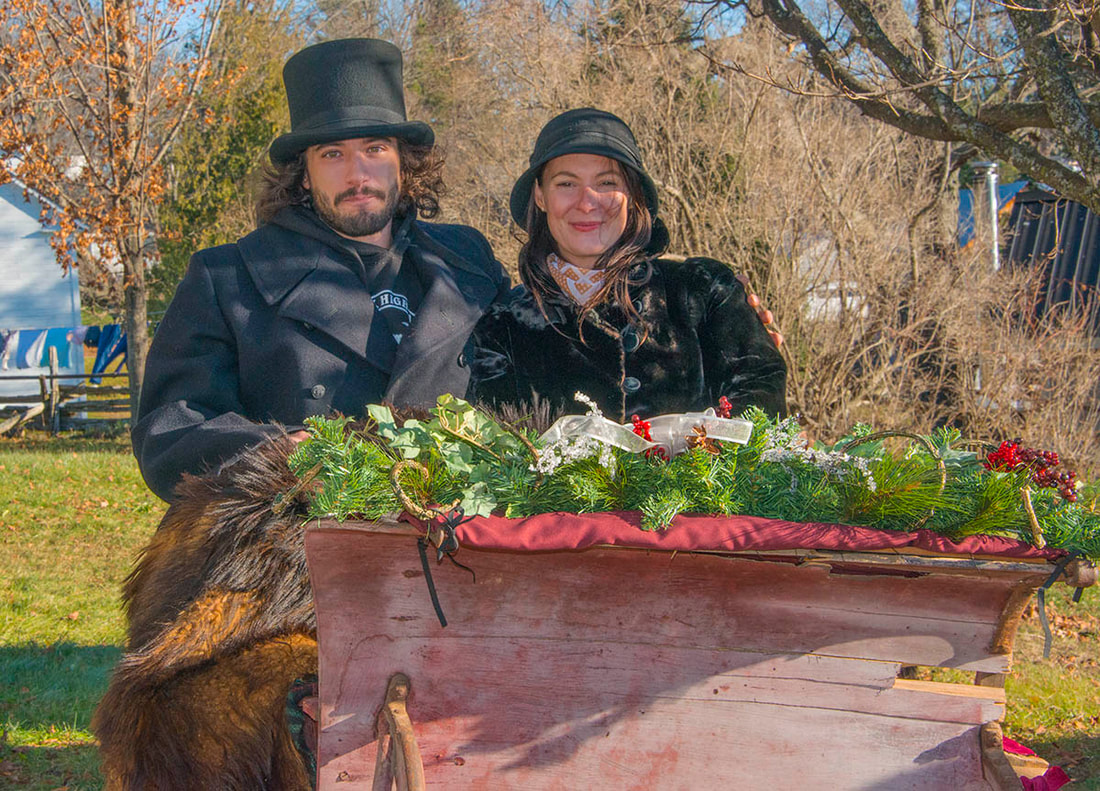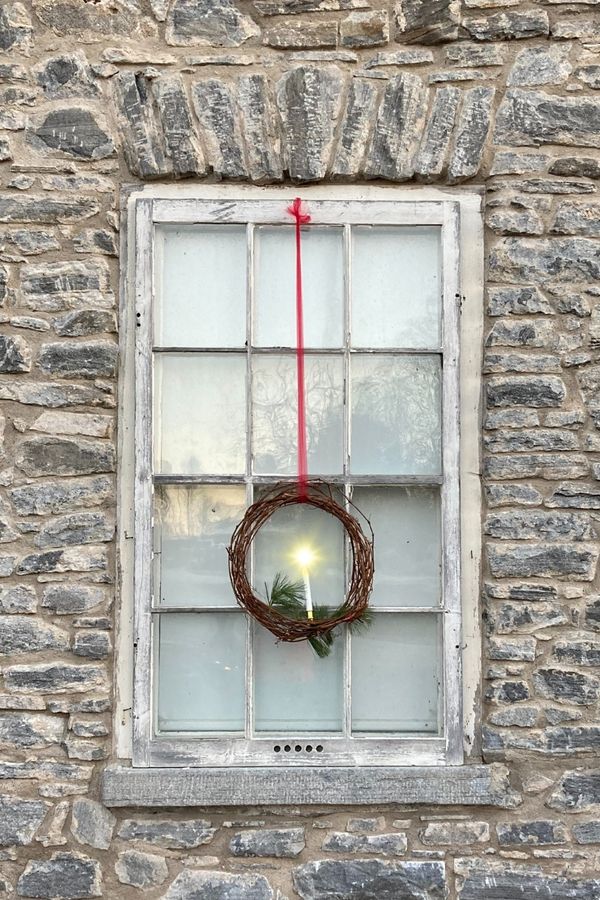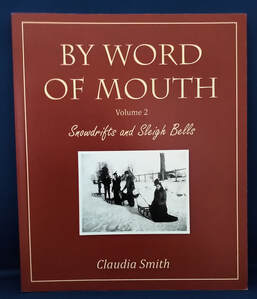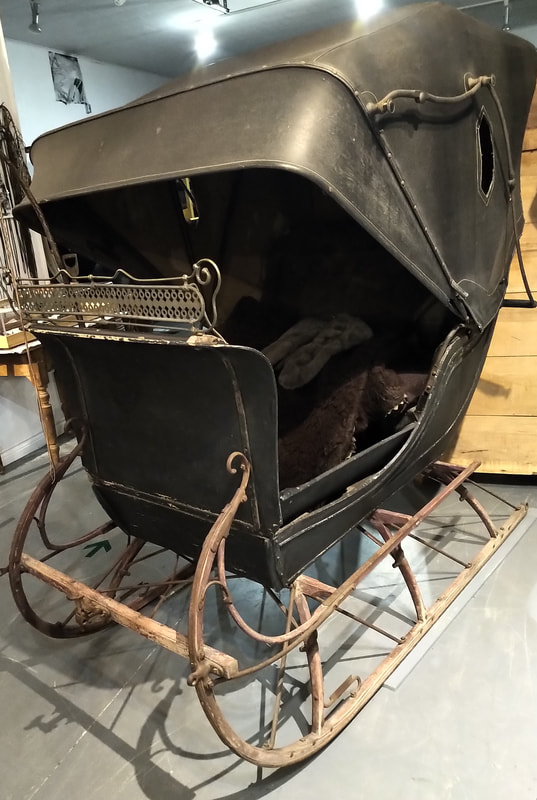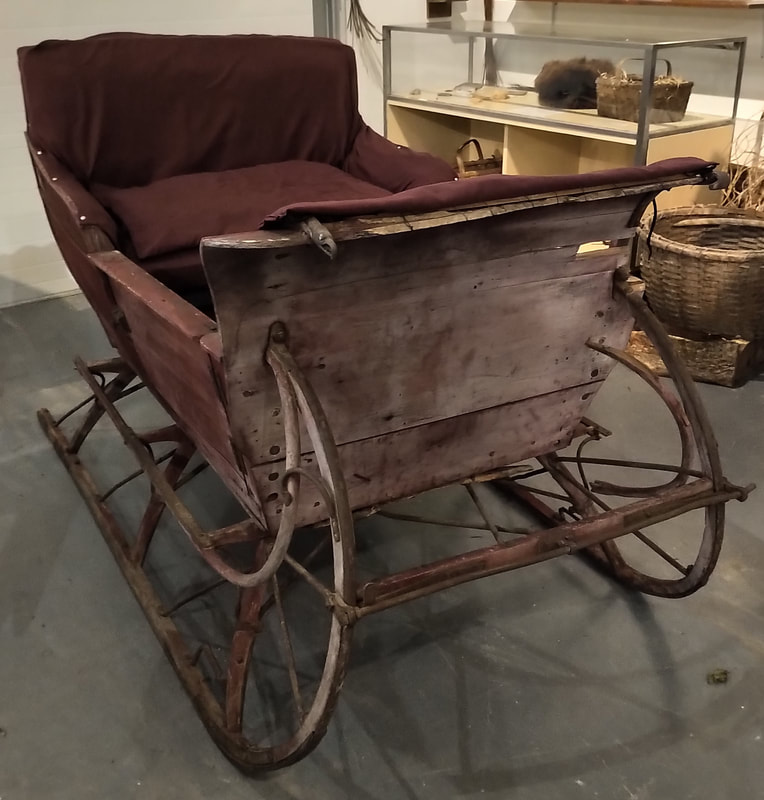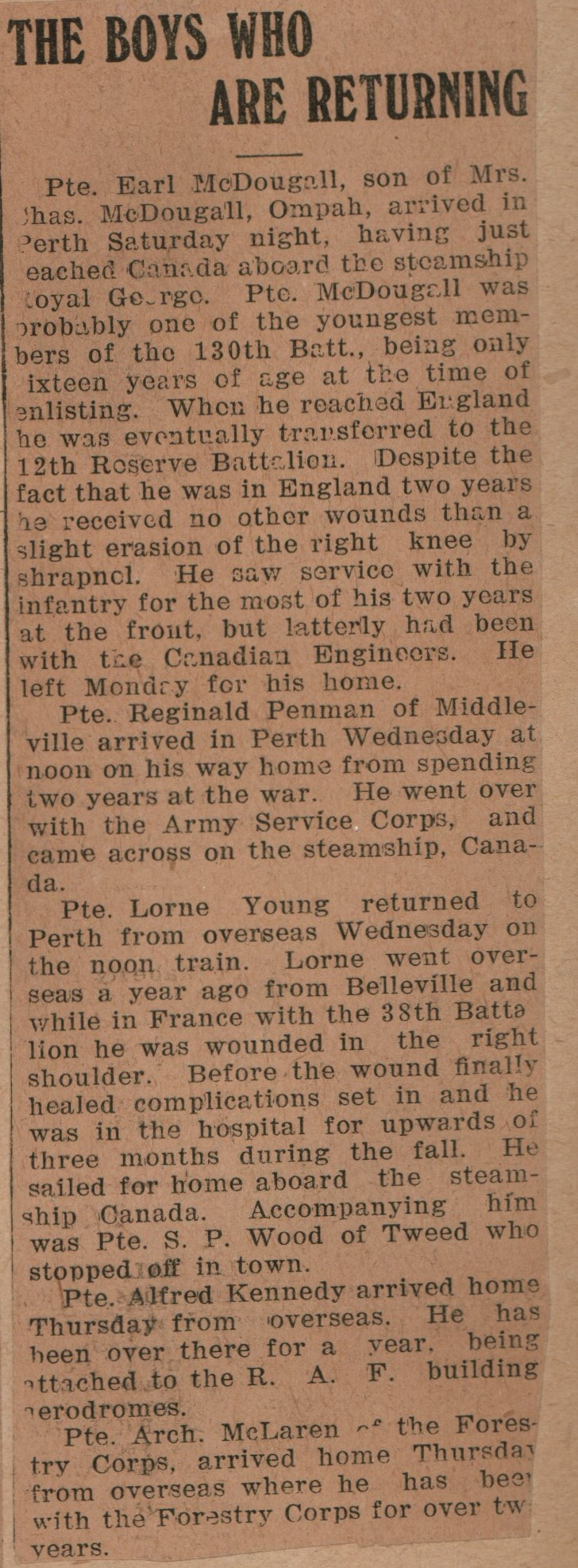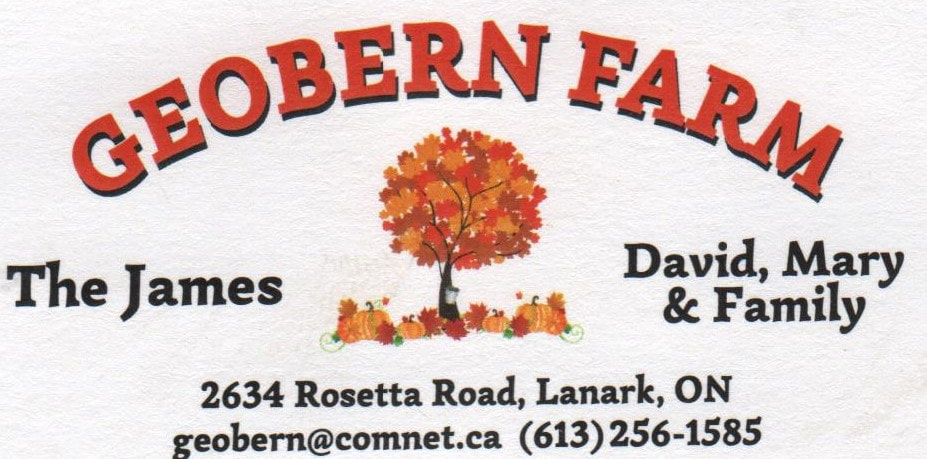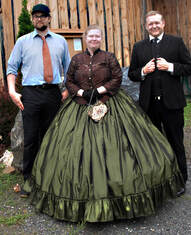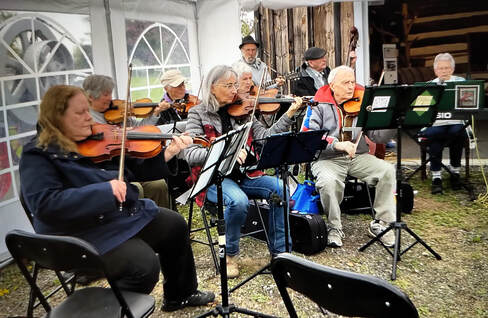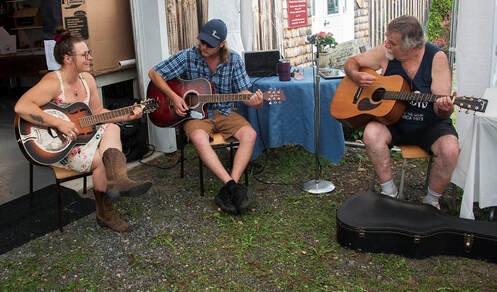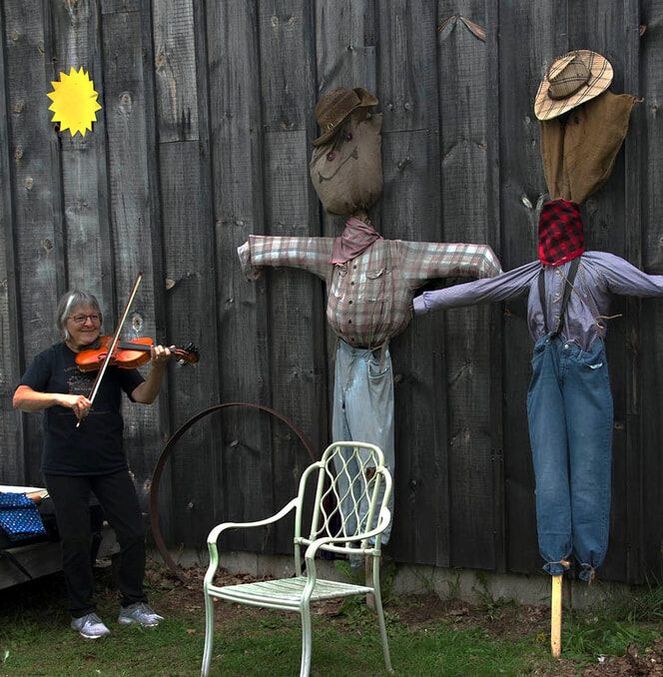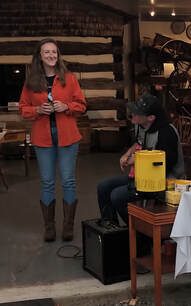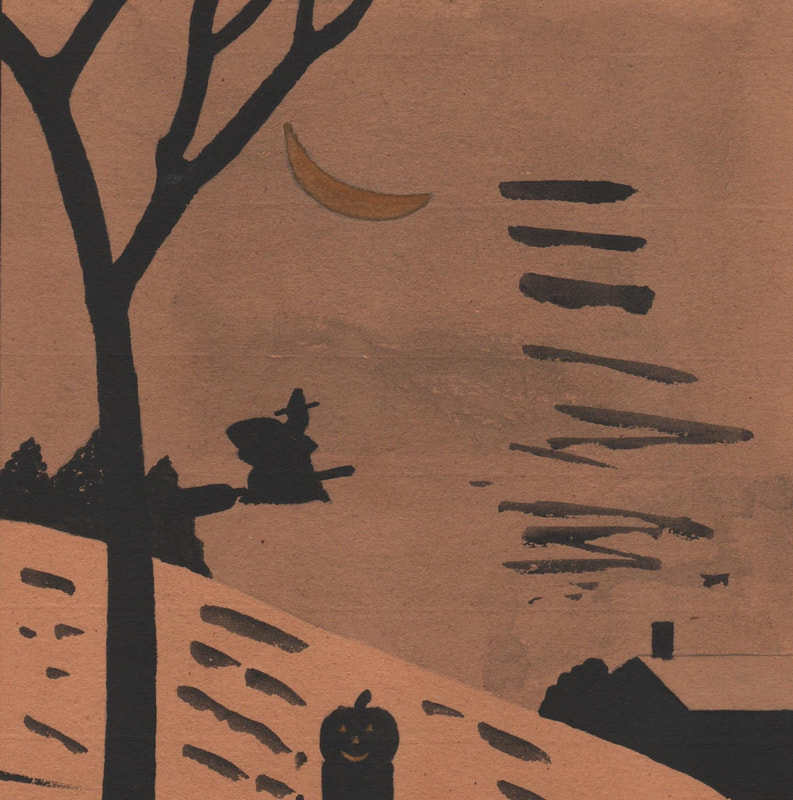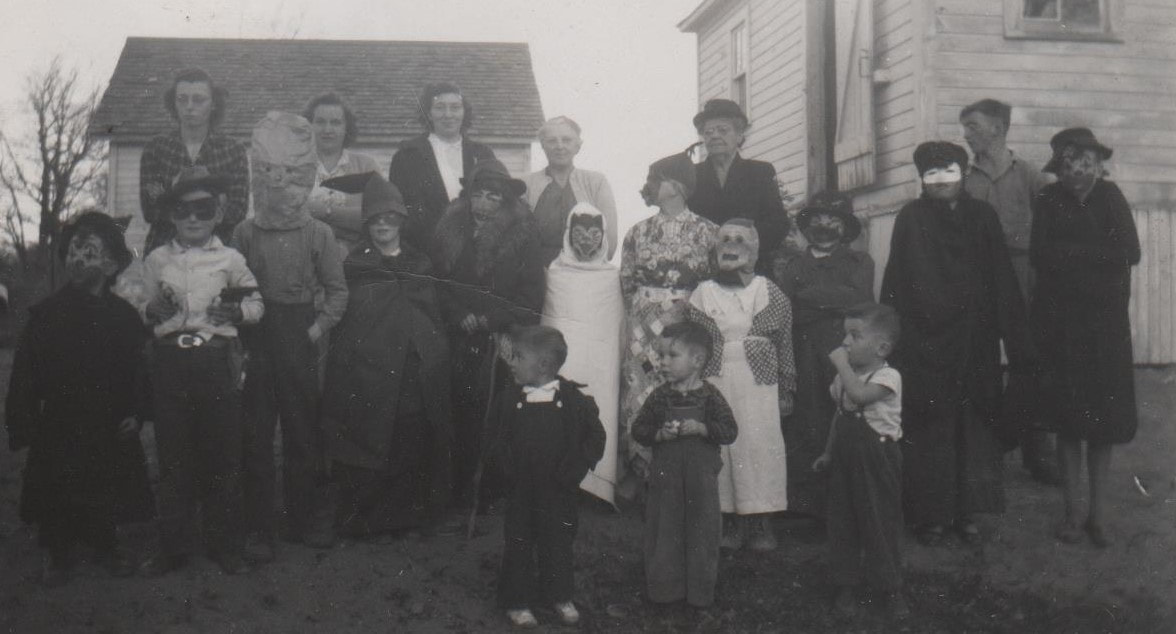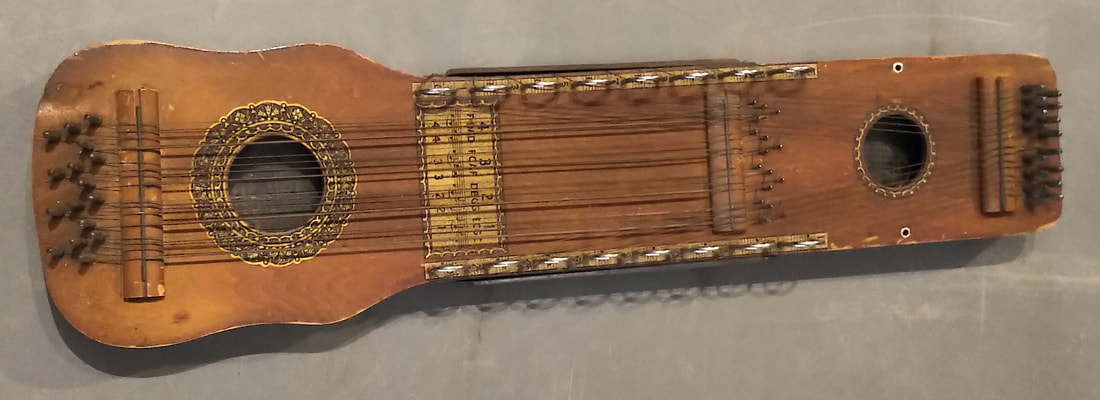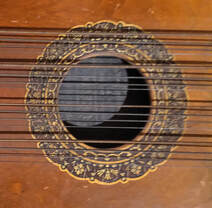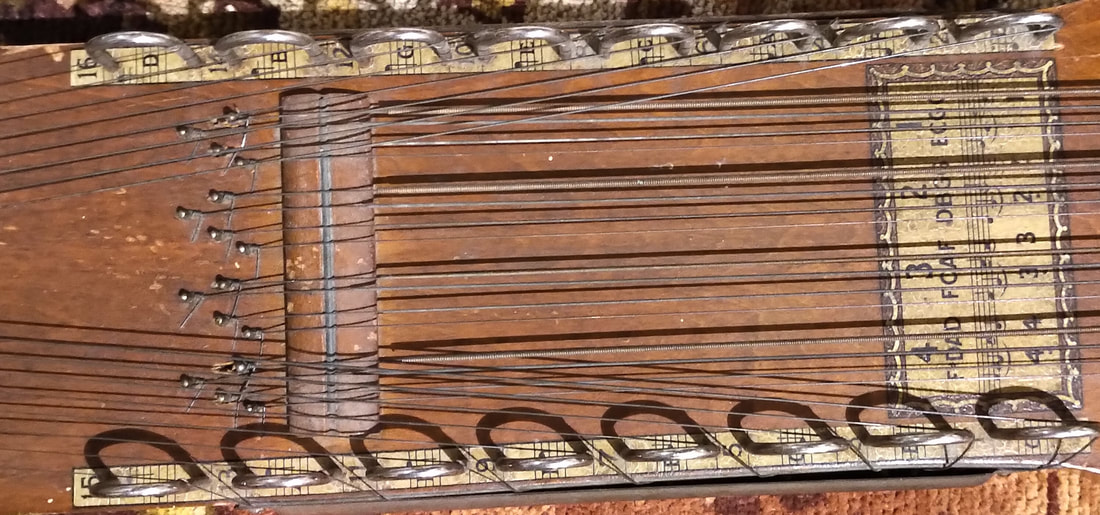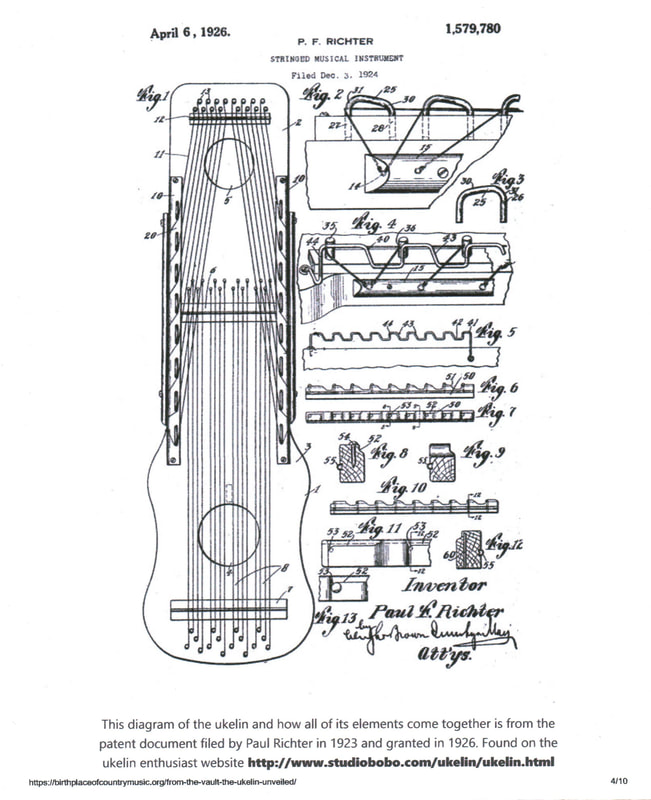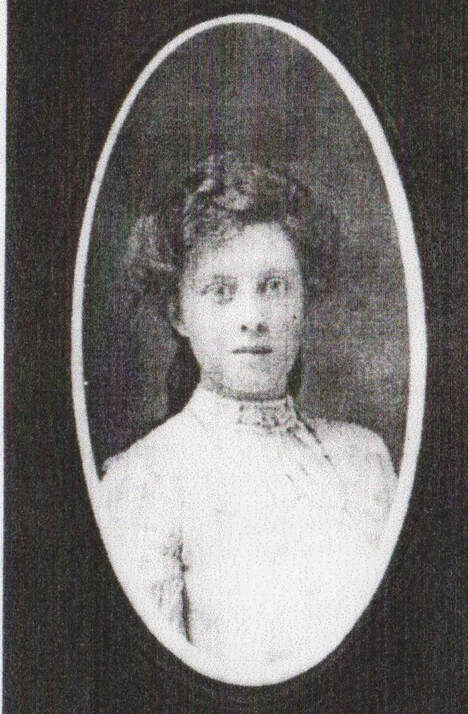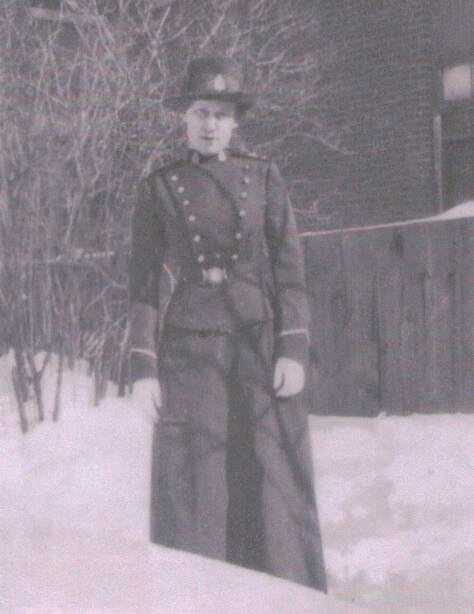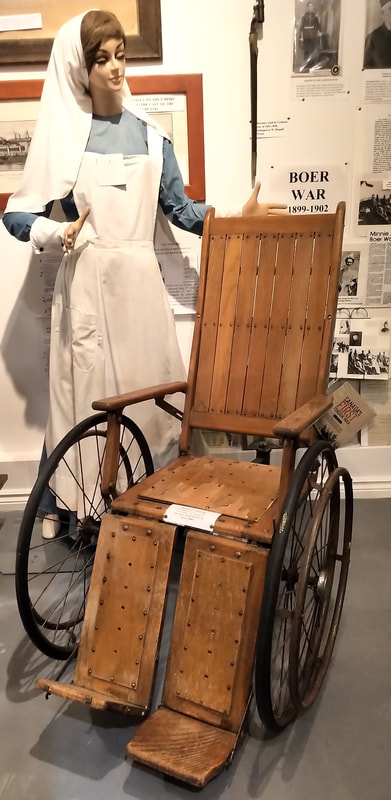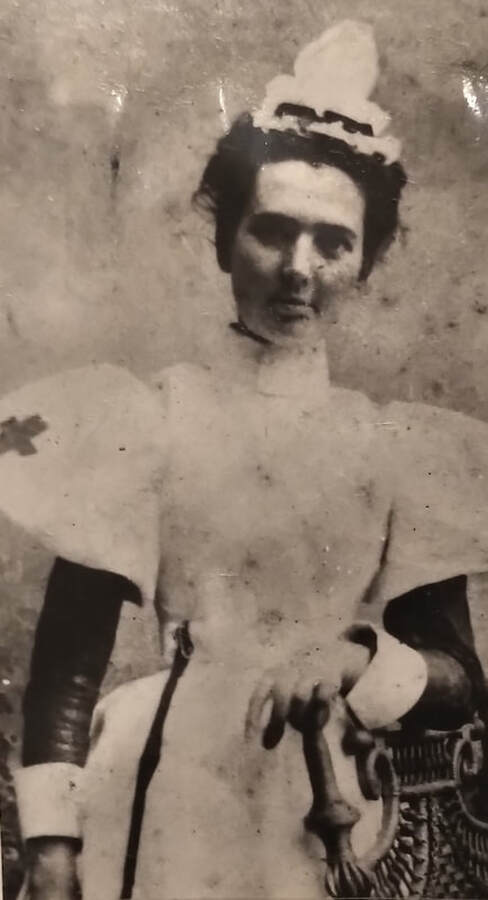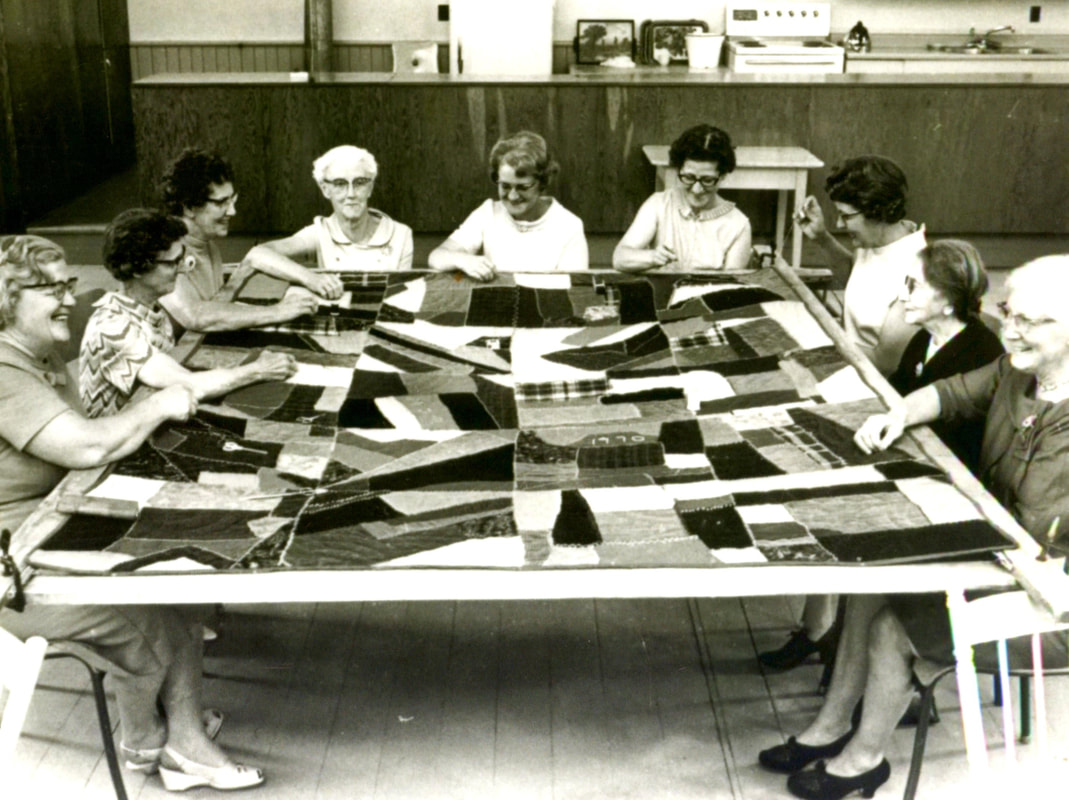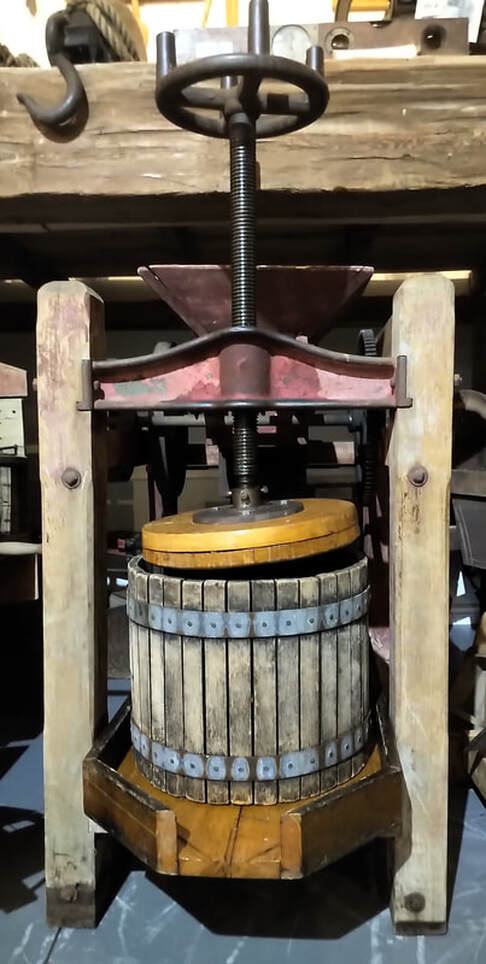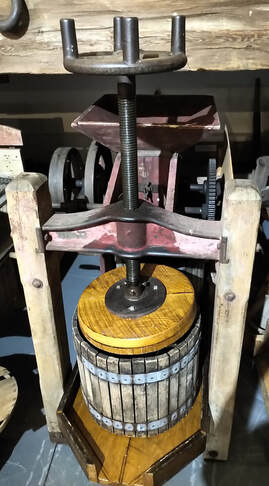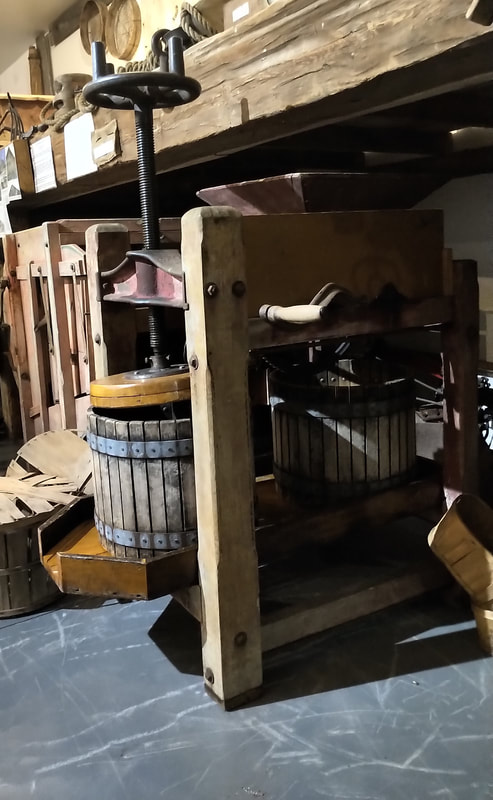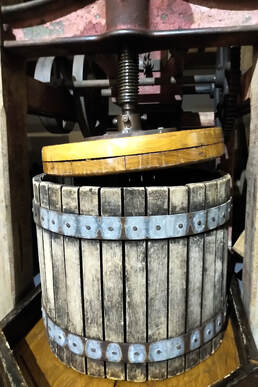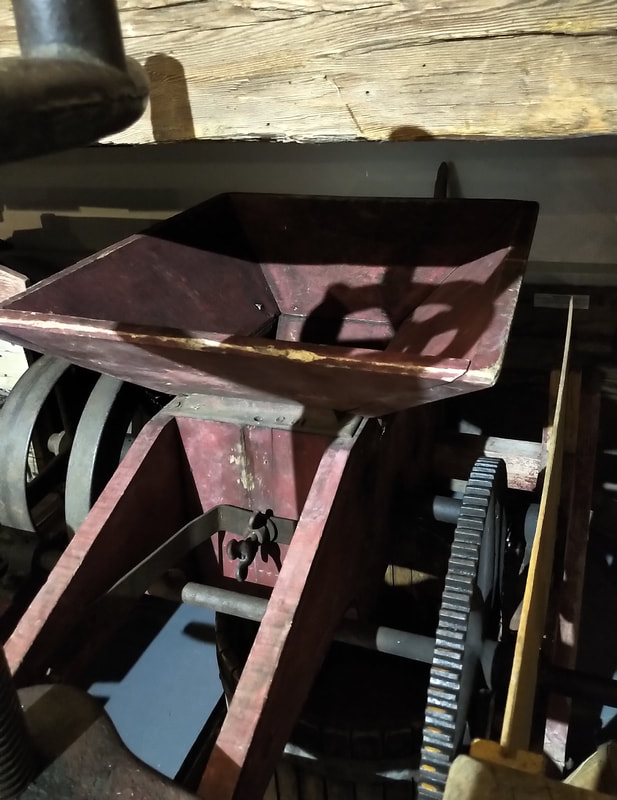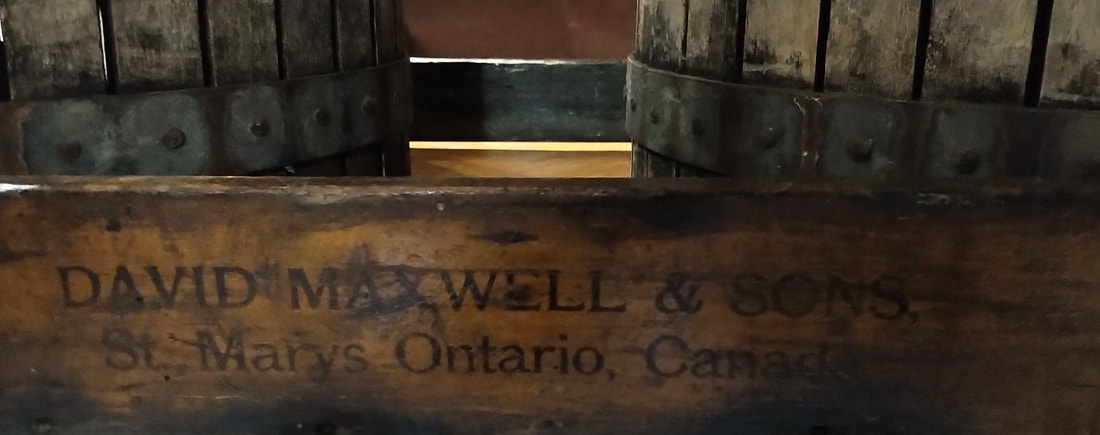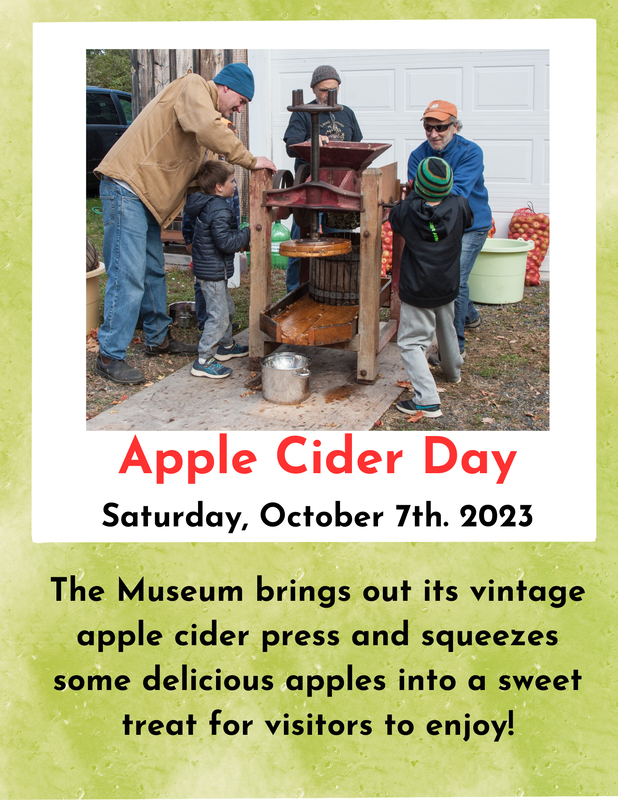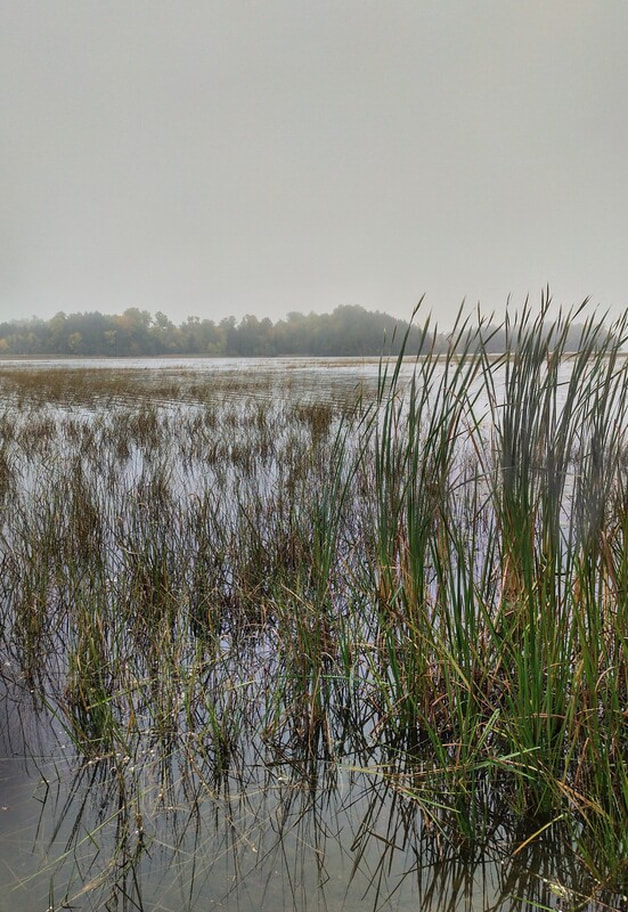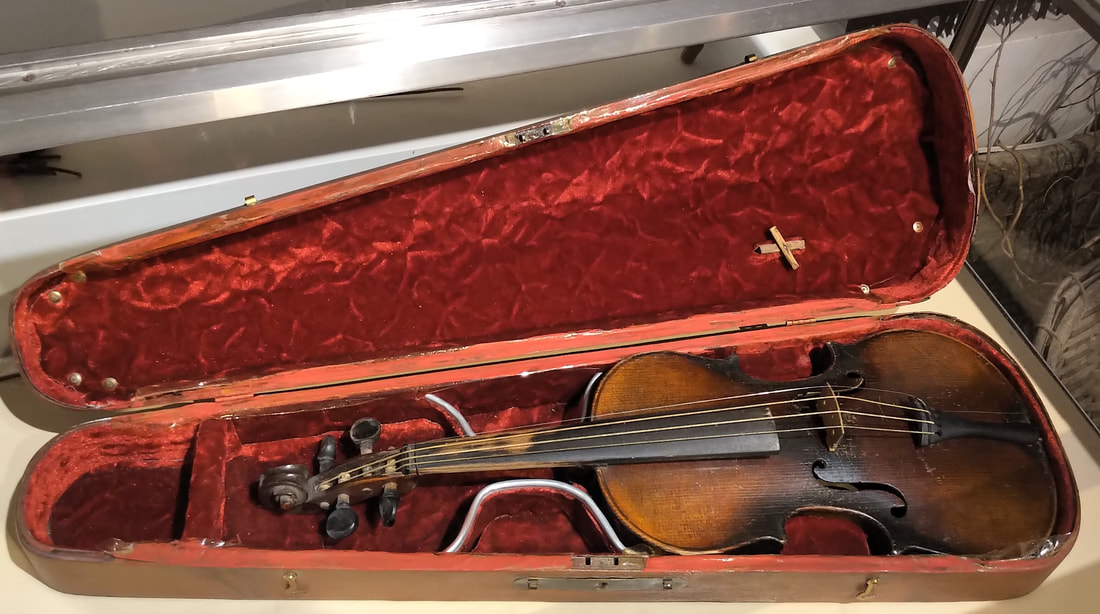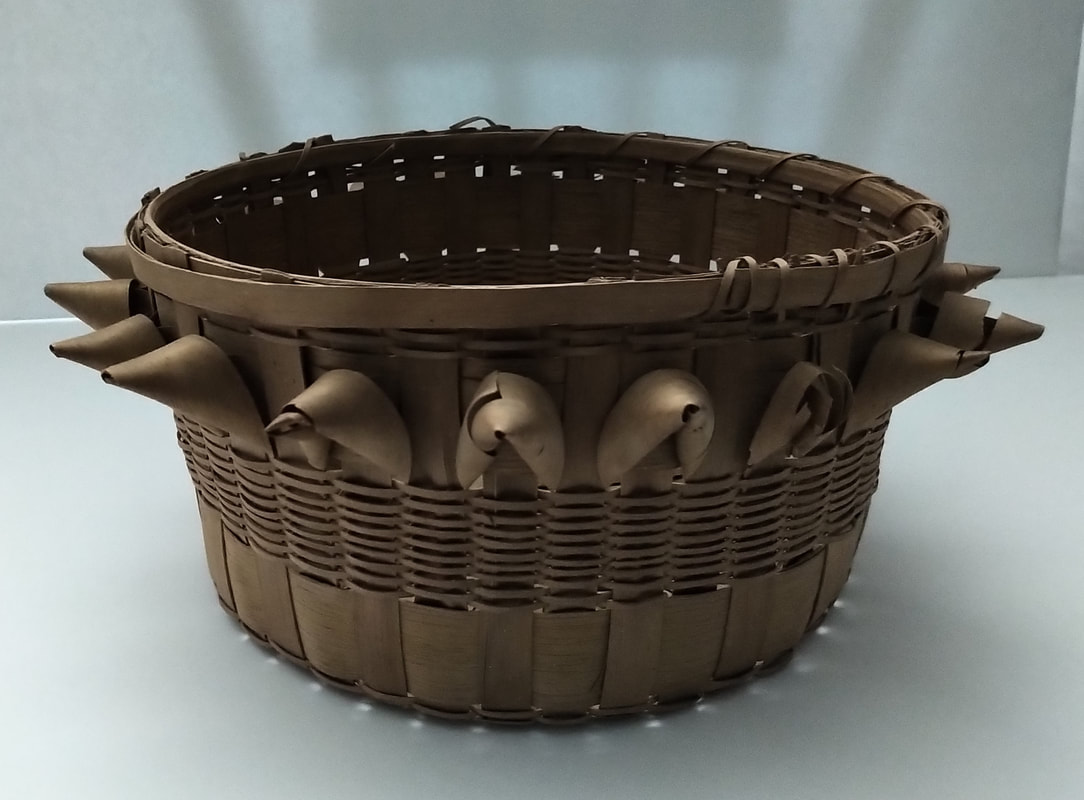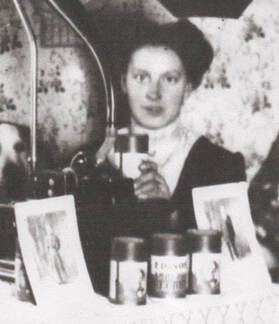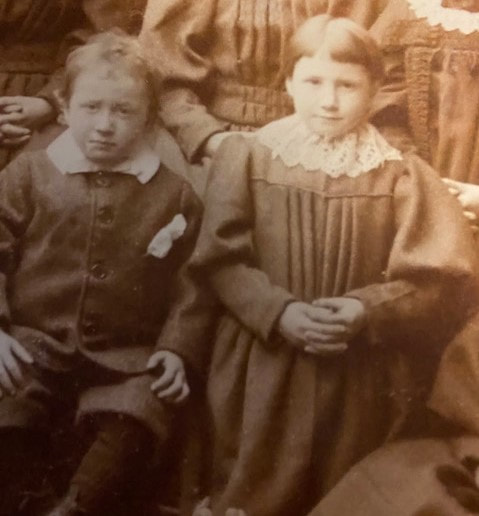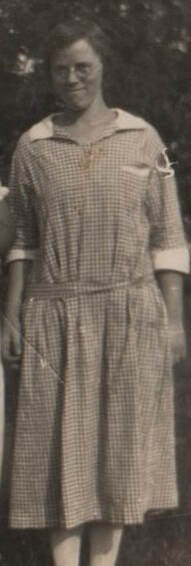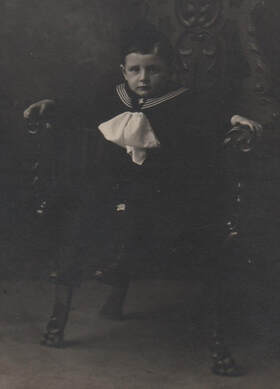|
The Middleville and District Museum is celebrating the Christmas season in Victorian style again this year. Families are invited to drop by on Saturday, November 25th between noon and 4pm to join in the fun. There will be lots of opportunities to pose for a family photo just in time for Christmas card sending. The old schoolhouse door will be decked out for the perfect backdrop. The ruby red cutter will be parked nearby. Don a top hat, if you wish, and pose with the cutter for a vintage shot. If you have a sweet tooth, drop by the treat table and indulge in some home baking along with a hot chocolate or apple cider. Gingerbread cookies will be decorated at the shed. The craft table will have some fun things to make. All ages will enjoy a traditional storytime in the cabin. If you are ready to do some Christmas shopping, the book 'Snowdrifts and Sleigh Bells, by local author Claudia Smith, will be available at a special holiday price. The Museum volunteers have been busy decorating and parts of the Museum will be open to visitors. Be sure to dress warmly as some activities will be outdoors. We hope to see you there.
0 Comments
Robert McLaughlin, son of Irish immigrants, was born on a farm near Millbrook in 1836. The family moved to Tyrone of Darlington Township. As a young man, Robert had an interest in woodworking which led him to an American magazine about coachmaking. He tried his hand at building a cutter in 1863. His neighbours took notice of his workmanship and soon put in orders for him to build cutters for them. Robert set up shop in Enniskillen and continued to make carriages. Robert became a shrewd businessman and patented the innovative 'McLaughlin Gear' in 1880. Robert moved the family to nearby Oshawa where he established McLaughlin Carriage around 1884. By 1899, the company was producing an annual output of 2500 cutters and sleighs as well as a similar number of carriages. In 1904, the production would swell to 14000 vehicles. McLaughlin Carriage Company Limited was said to be the largest maker of carriages in the British Empire. At the same time, the surge of motor vehicles became increasingly challenging for the carriage business. Robert had three sons and two of them grew up to work in the family business. It was this second generation of McLaughlin's carriage makers that would later take the family company to a new level. The sons became interested in producing automobiles. In 1907, the McLaughlin Motor Car Company was established. Eventually, the McLaughlin family partnered with American investors and began employing American workers. Parts for automobiles being manufactured in Oshawa were being imported from American suppliers. The McLaughlins made the bodies of the vehicles with a nod to carriage construction methods. In 1915, the carriage aspect of the business was sold to Tudhope's of Orillia. Later, the McLaughlin company was building Chevrolet and Buick automobiles under the same roof in Oshawa. In 1918, the McLaughlins sold their family company's interest in the production of Chevrolet-Buick to General Motors in the United States. So from a humble beginning of building a cutter inspired by a magazine, a small family business grew to become part of something very well known today. The red cutter donated to the Museum last season has some interesting aspects. On one hand the side doors seem to point toward it being a Portland Cutter from the United States. The eagle head on the rein holder seems to confirm its American influence. However, a brass plate on the back of the seat reads: 'The McLaughlin Carriage Company, Oshawa Ontario'. The McLaughlin company catalogue of 1915 was advertising a 'Portland Sleigh' and several models produced by McLaughlin Carriages were available with detachable doors that could be purchased separately. With the integration of the Canadian and American manufacturing companies, it may never be conclusively determined which side of the border the Moulton family cutter was actually built. It is certain that it carries the McLaughlin name plate.
A reception committee from Middleville riding in a carriage pulled by a decorated team of horses greeted Mary Ellen 'Minnie' Affleck when she arrived home from the Boer War. The committee had made their way to Perth. They escorted Minnie on her journey home passing through Lanark where a large and enthusiastic crowd had lined the street to show their appreciation for the local nurse's service. The entourage took a break in Lanark to hear three cheers and a band playing. They passed under an evergreen arch with the message, "Welcome Minnie". The group finally arrived at their destination of Middleville. A torchlight procession was organized to accompany Minnie and her family from their home to the Town Hall for a reception in the evening. In July 1945, Middleville community members packed the Town Hall to welcome home local soldiers who had served in the war. The Hall was decorated in patriotic style and a music program with patriotic choruses and readings was enjoyed by those attending. The red and white banner pictured above greeted the soldiers in the hall. Each returning soldier was presented with a signet ring, "in gratitude for their courage and loyalty in the war".
The Middleville and District Museum gratefully acknowledges the support of the Perth and District Community Foundation who supported several of the Museum's events this season through awarding a grant of $3000. The Scarecrow Day, Apple Cider Day and School visits were supported by this grant. The money allowed the Museum to purchase materials used at events and purchase advertising. Many community partners support the Middleville and District Museum throughout the season. Either by donating goods directly or giving special prices to the Museum, community partners help the volunteers make the events special. Solar Fluid Coffee of Galbraith generously donates their coffee for all the Museum events. Apples for Apple Cider Day came from the McLaren Orchards of Renfrew. Pumpkins and cornstalks for decorating our fall events came from Geobern Farm of Rosetta. Strawberries for the Strawberry Social came from Miller Bay Farm in Lombardy. Thompsontown Maple Products donated maple leaf candy suckers for school visits and delivered hay bales for the Apple Cider Day event. Many entertainers shared their talents and their time with visitors at events. Community members baked for Museum events. Thanks to local bakers Cyndi Carruthers and Kristen Dodds who donated treats to events. Alyssa Toshack made the slab cakes for our strawberry social. The Museum also enjoys support from its good neighbours, Trinity United Church and Middleville Fair as we share resources. The Middleville and District Museum volunteers are very grateful for the overwhelming support they receive from their community partners.
The traditional themes of jack-o-lanterns and witches flying on broomsticks were depicted by students in school artwork. Hallowe'en of today has evolved from many old traditions. The jack-o-lantern is said to be a nod to an old Irish myth about 'stingy Jack' who had only a turnip and a piece of coal to light his path.
The trickery of Hallowe'en was carried on by immigrants to North America who had indulged in pranks and gags in the old country and brought the tradition with them to their new homeland. . The Victorians, including Queen Victoria herself, liked to have parties. Games such as bobbing for apples were popular. All Hallow's' Eve or Hallowe'en was celebrated in local schools. Most costumes were made out of oversized clothes and borrowed from family members. The trend was to have a ghastly mask as can be seen in the picture above. Despite newer costumes and decorations following modern themes, the old traditions of Hallowe'en persist today. Ukelin is a trade name for an instrument that was patented in the 1920’s. Paul Richter is credited with it's creation in 1923. It was described as ‘primarily a bowed psaltery combined with a small palate of chords that can be strummed with the left hand’. It had two sets of strings and required a skilled musician to coordinate its playing. The Ukelin has intricate and decorative designs on its surface. Although its name suggests it is a combination of a ukulele and a violin, the Ukelin is much closer to a violin in its characteristics. Ukelins were sold door to door throughout the rural areas. The salesman would do a quick demonstration of a simple tune to convince a potential buyer of the ease of learning to play it. The Ukelin came with instructions and sheet music. In reality, the instrument proved quite challenging to play and as a result its popularity declined. The Middleville and District Museum has the King family Ukelin on display in the Music Exhibit. Be sure to have a close look at this rare instrument next season. Listen to: Amazing Grace played on the Ukelin
Lucy Affleck was born in Middleville in the early 1900's. She worked as a school teacher. At the age of 44, Lucy travelled to teach at Round Lake Residential School near Stockholm, Saskatchewan. After being there a few months, Lucy saw the deplorable conditions the children were living in and being a person of strong moral character, she decided to write a passionate, five page letter outlining what she was witnessing at the school to the Superintendent of Home Missions, Dr. Alfred Barner, in Toronto. .She received a short reply that steps would be taken to improve the situation. Within a month, Lucy was summoned to the Principal's office, handed a cheque and her employment was terminated on the spot. When she asked for an explanation she was curtly told that the Church demanded that any disloyal staff be immediately dismissed. Lucy was one example of a young teacher who tried to bring attention to the plight of children in Residential Schools and paid the price for telling the truth as she saw it. She was described as, " a remarkable person, an intellectual, totally honest in her thinking". She returned to Middleville and lived out her life with her family. In the Hall of Honour in Centre Block of the Canadian Parliament Buildings is a memorial to the more than 2800 nurses who served in the Canadian Army Medical Corps. These women were enlisted officers and served with a specially created all female rank of ‘Nursing Sister’. Their rank was considered relative to male officers and they received equal pay. However, the officers’ declaration papers had to be adapted by crossing out ‘his’ and writing in ‘her’ in the appropriate places. The nurses had the nickname of ‘Bluebirds’ because of the blue uniforms they wore with white veils. The Bluebirds cared for the wounded and sick soldiers who were suffering from life threatening diseases often under difficult and dangerous circumstances with great risk to their own personal safety. Janet J James was born in Clayton in Ramsay Township on September 9th, 1881. She completed her nursing training in Montreal and served most of the time she spent overseas during WW1 in France. She was the daughter of Enoch James and Mary Jardine. She enlisted at the age of 34 on December 24th, 1915. After the war, Janet returned to nurse in Montreal until her retirement in the early 1950’s. Janet travelled after her retirement and picked up souvenirs along the way. She retrieved a shell casing from the beach at Vimy Ridge and it is now on display in the Middleville and District Museum with many of Janet's other belongings. Mary Ellen (Minnie) Affleck was born in 1874 in Lanark Township. She taught school as a young woman. When she had earned some money, she ventured to Kingston to train as a nurse. At the age of 25, she was off to South Africa. Minnie was one of four local nurses who were the first Canadian nurses to serve overseas and in 1899 they cared for wounded soldiers in the Boer War. She was stationed at Rondebosch which was considered a tent community that could accommodate 600 patients. The conditions were described as quite challenging. She was later sent to Springontein. In an article in the Lanark Era in 1900, she was described as, " a nurse of exceptional merit and cleverness. In fact she was said to be the most clever and thorough nurse that the Head Surgeon had met". After the War ended, Minnie returned home to Lanark County. She was met with a heroine's welcome. Later, she went to Vancouver, BC to continue as a Nursing Sister in the Canadian Army. It was in B.C. that she met Adolphus Wolfe and they married. She remained in B.C. until her death in 1956. Community Women have met for fellowship and to support each other and their communities for many decades. It is in these community groups that women did incredible work to support others. The Women's Institute took on such projects as raising money for streetlights for their village. They raised funds to purchase a piano for the Community Hall. Quilts were always being made to support families in need especially after a house fire. They planted Victory Gardens and trees. Money was raised to donate to the purchase of land for picnics, ball games and socials. Water tanks were purchased for local schools through fundraising efforts by women. A flag pole for the Hall was purchased in 1926 by the local Women's Institute members. The Almonte hospital received a stretcher that year, as well. These are a few examples of the work of women in their communities. Think of all the benefits of the work they did for the benefit of others. So to celebrate Women's History month in October, remember the work done to improve their communities by these and many other remarkable women.
Although fruit presses were used before the 1900's, it was in 1916 that Madeline Turner sought a patent for a fruit press that would both chop and press apples. 'Cider mill' is actually considered the proper term if both the chopper and press are together in one machine as the Museum's press has. Sweet and tart apples are washed and then roughly chopped. Next they are placed into the chopper at the top. As they are directed downwards onto 'teeth', the apples become ground into pulp. The teeth are activated by turning the cranks on the sides. When the wooden barrel is partially full of apple pulp, it is moved underneath the pressing plate attached to the long, iron shaft. The iron wheel at the top of the shaft is turned and the plate moves down onto the pulp and squeezes the juice out. The liquid runs down the wooden trough and into a vessel placed below. The juice oxidizes into an amber colour. Froth that forms on the surface can be skimmed off. People wanting to pasteurize apple cider usually heat the cider to 160 degrees F for several seconds. It can also be frozen to be enjoyed at a later date. 30 - 40 apples will usually produce about one gallon of cider. Mulled Apple Cider 1 gallon cider 8 - 10 whole cloves 3 cinnamon sticks, broken 1 lemon or orange, sliced 2 inch piece of fresh ginger, cut into thick slices Combine into large pot. Simmer 30 minutes. Strain with a fine sieve. The Middleville and District Museum will once again bring out its vintage apple cider press and welcome visitors to enjoy the taste of fall.
Join the fun on Saturday, October 7th, from noon - 4pm at this free family friendly event. There will be apple treats, live music and crafts for kids. Note: In the case of rain, the event will take place in our large, event. The Middleville and District Museum continues to look for and acknowledge the stories of Indigenous People who called the area home. A recent donation from the family of Joe Baye included photos and stories as well as family history. The photographs enhance the story of his children. Some stories tell about Joe's brother, Johhny Bey, who lived at the end of the Mazinaw. A recent donation of a basket made by the Baye family brings up the story that Peter Baye, father of Joe and Johnny travelled to this area with Joe's family. The family made beautiful baskets for sale and also to be given as gifts for friends and neighbours. The basket resembles those made by the Whiteduck family of Joe's Lake. It turns out that Johnny and the Whiteduck family of the same area knew each other well. The arrival of Joe's violin leads to stories about what accomplished musicians the Baye family were known to be. There are books that tell about the Mazinaw and the pictures on the rocks Notes compiled tell about the possible Indigenous trails that, in some cases, later became settler trails and eventually byways in the region. The twists and turns were carefully crafted to follow the high land. Some would involve portage and others lead to fishing and hunting grounds. As the artifacts and information come to the Museum, the Indigenous Exhibit grows with depth and personal stories. Visitors can learn about who lived here in the rocky highlands of the area using the natural landscape for all their needs,. The abundance of wildlife, waterways and flora with many uses made this area a desirable area to live. . The Middleville and District Museum hopes to collect and preserve more stories of Indigenous families who lived in the area. Visitors learn about the lives of the families through the artifacts and narratives. Plan to spend some time reading the stories on your next visit to the Museum.
Some children arrived with only a name written on a tag pinned to their jacket.  "I want to be like a sunflower so that even in my darkest days, I will stand tall and find the sunlight." Anonymous There were records kept by the British Homes that sent groups of children across the ocean to Receiving Homes in Canada. Small trunks containing clothes, writing material and a Bible provided by these agencies were packed on the ships to accompany the children on their long journeys. Upon arrival, they would be given a medical check and soon after be taken to the train station to be sent across the province to a waiting family. The name tag would identify them to the family waiting where the train stopped. Typically, the children were dispersed to their destination within a few days. Demand for children far outpaced the supply most of the time. There were formal indentures that required the receiving family to agree to provide food, lodging, clothing, education and religious instruction. Children by the age of eight would be expected to complete work in return. Boys would work on farms and girls would work in households. An inspector was required to visit the child once a year and file a report. This did not always happen. This is part of the story of how many British Home Children arrived in Canada mainly between 1869 and 1939. It is estimated that over 11 percent of Canadians today are descended from a British Home Child. There is more to the story. Many decades later, a name can be the key to unlocking the secrets of the past. Beginning with a name, records can be found. A life story can be told. In many cases, children who were brought to Canada as Home Children sought to erase the stigma and pain of their childhoods as they became adults and made a new life for themselves. They did not share stories of the past. Today, the descendants of these children are able to trace the journey of their ancestor and honour the resiliency of these individuals. Many grew up, had successful careers and raised families of their own. Home Children Canada is an organization with a vast amount of resources for those interested in researching a Home Child or learning more about this subject. The Middleville and District Museum will be featuring the life stories of Home Children with local connections. Visitors will be able to learn who these children were, who they lived with, where they went to school and what unfolded in their lives as they grew up. Volunteers have researched the lives of the children often starting with only a name. The local children have been added to the Museum’s Lanark Family Trees on Ancestry.ca.
Plan to drop by the Middleville and District Museum this Saturday, September 23rd between noon and 4pm as we recognize the lives of the children. |
AuthorThis journal is written, researched, and maintained by the volunteers of the Middleville Museum. |
